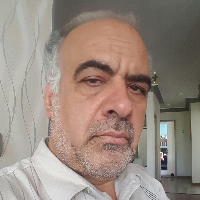Archeological park, an appropriate pattern for preservation and sustainable development of historical sites
Historic sites and museums have drawn individuals’ attention due to their ability to make a connection between the audience and the past. In addition, visiting the historical sites is more significant for the audience as they are at the heart of the artwork and its field of creation. However, the managers’ intellectual concern is the necessity of preserving tangible and intangible heritage, such as natural or historical heritage, while trying to keep the area alive. Therefore, it is essential to answer the two following questions to achieve the research goal (efforts to explain the needs and suitable spatial components for public presence in historic sites in the form of an archeological park). The research questions are: what are the requirements for creating an archeological park on a historic site? What are the main components of creating an archeological park?
This investigation has been conducted based on a qualitative approach and historical interpretation strategy, according to studying and researching national and international theories and charters about museums, historical sites, and archeological parks and explaining the features of each one. Then the effective factors, backgrounds for creation and goals of the relevant organizations (UNESCO, ICOM, ICROM, and ICOMOS), and the theorists’ views on museums and archeological parks with logical reasoning strategy about basic topics have been codified. Based on the coded items, the components for transforming a historic site into an archeological park have been introduced and extracted. This research assesses the capacity of the historic sites for transforming them into archeological parks according to the components or the necessary potential for creating them in the vicinity of some historical sites. It also explains the effects of the archaeological park on the sustainable development of the historic site and the local communities associated with it.
Historical site capacity must be assessed by the components required for making an archeological park according to their location, their adjacency to the residential areas, the access routes, and the availability of infrastructure to local communities. In this research, these components are categorized into two groups: main components and developmental components. These components have been extracted from the relevant organizations’ objectives and the theorists’ views on museums and archaeological parks. The main components are the components for creating an archeological park, including the tangible heritage (historical and natural) and intangible heritage. In contrast, the development components are components that provide the conditions for the survival of an archaeological park. These components include facilities and equipment from the road to energy and their tools and means of transportation. Service refers to all activities that allow people to continue to attend. The existence of efficient staff is another necessity for the survival of the archeological park. The social component indicates the need for the participation of local communities in the area. Finally, security and safety are also basic and influential components in this issue, which considers both tangible and intangible effects on clients, audiences, and employees.
Historic sites are one of the most important sources for transmitting information from the past until now. They have extraordinary values that require comprehensive protection to transmit these values to the future. The experience of attending historical sites for professionals and the public has a very influential role in recognizing the history and cultural identity of the region. At the moment, the experiences in open museums and museum sites show that archeological parks can strengthen the sense of belonging of the local community and sustainable development of the region by coordinating and integrating management and resolving the needs of researchers and visitors. They can also offer comprehensive and sustainable scientific protection of the heritage of the historical site in the main location instead of transferring the museums to other places. In order to achieve this goal and prevent damages from uncontrolled tourism to historical sites, we need to check the capacity assessment and the conformity or non-conformity of historical sites and their surrounding environment to become an archeological park. As a result, if a historical site has the necessary conditions and components to become an archaeological park in the region, it can provide sustainable protection of the historical site and sustainable development of local communities in the region by integrated management in the form of the archaeological park. It requires two groups of components, including the main components that an archeological park must have (tangible, intangible, and natural heritage), and development components that provide the conditions for its survival (facilities and equipment, services, staff, social participation, security, and safety).
- حق عضویت دریافتی صرف حمایت از نشریات عضو و نگهداری، تکمیل و توسعه مگیران میشود.
- پرداخت حق اشتراک و دانلود مقالات اجازه بازنشر آن در سایر رسانههای چاپی و دیجیتال را به کاربر نمیدهد.



